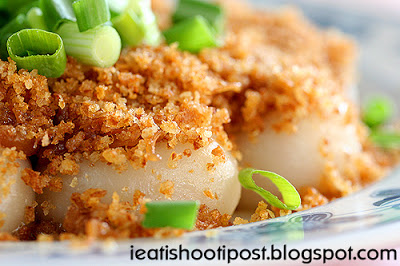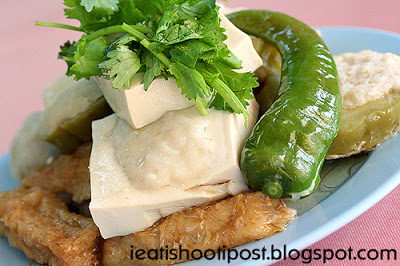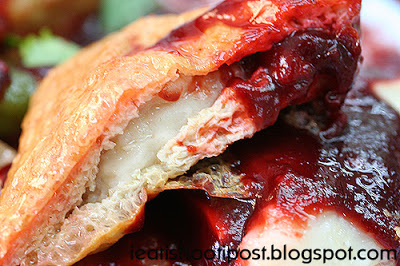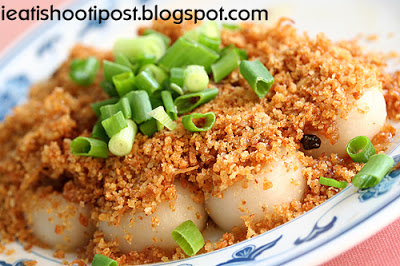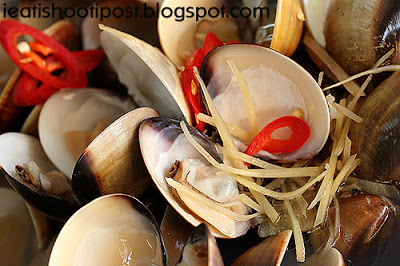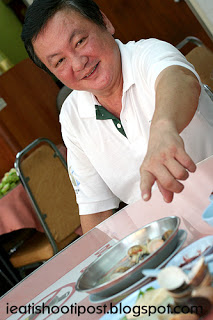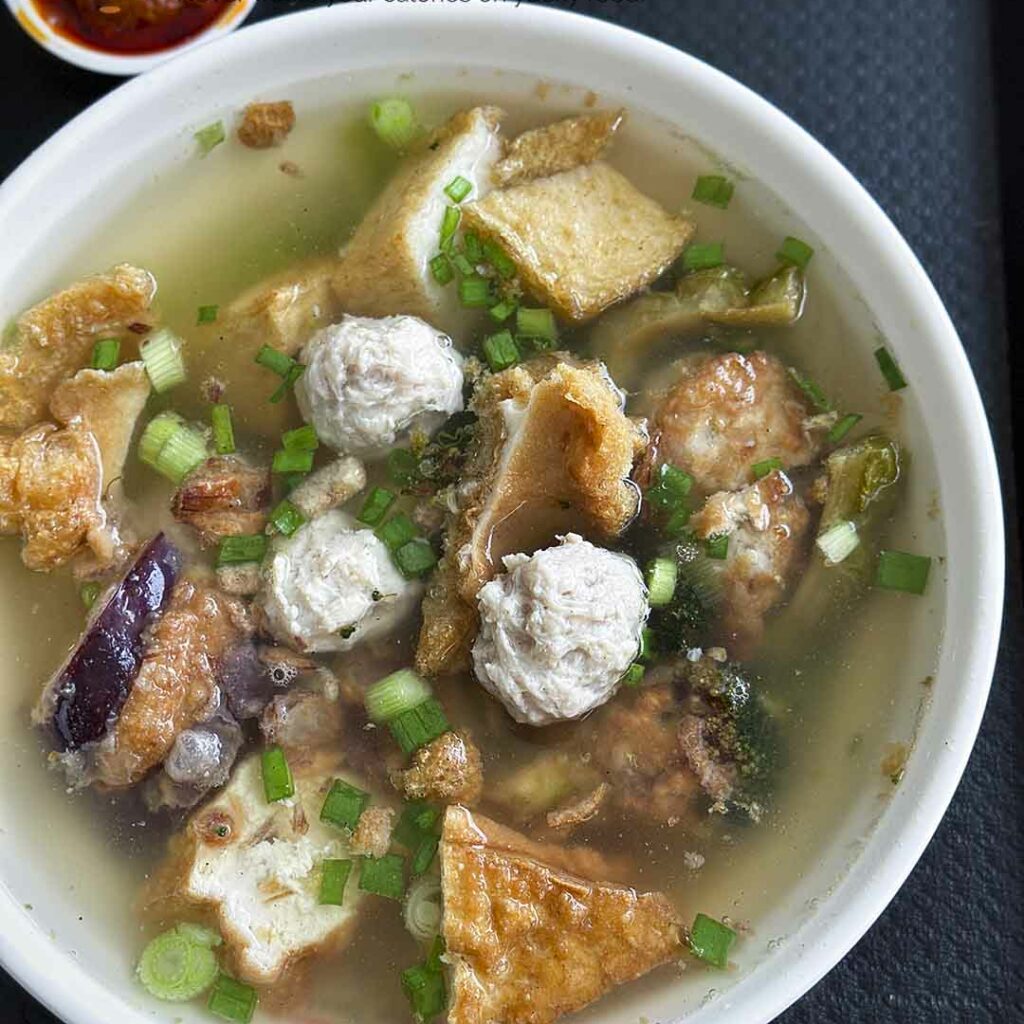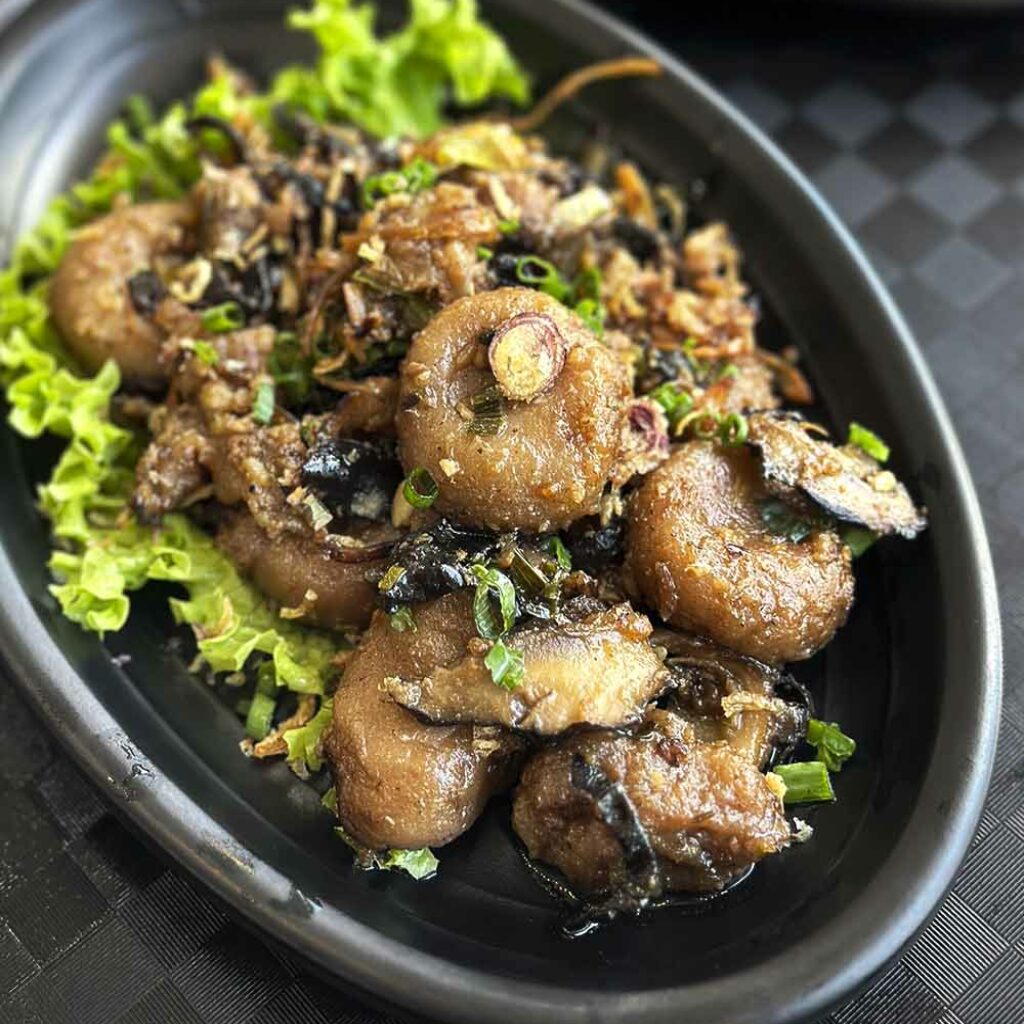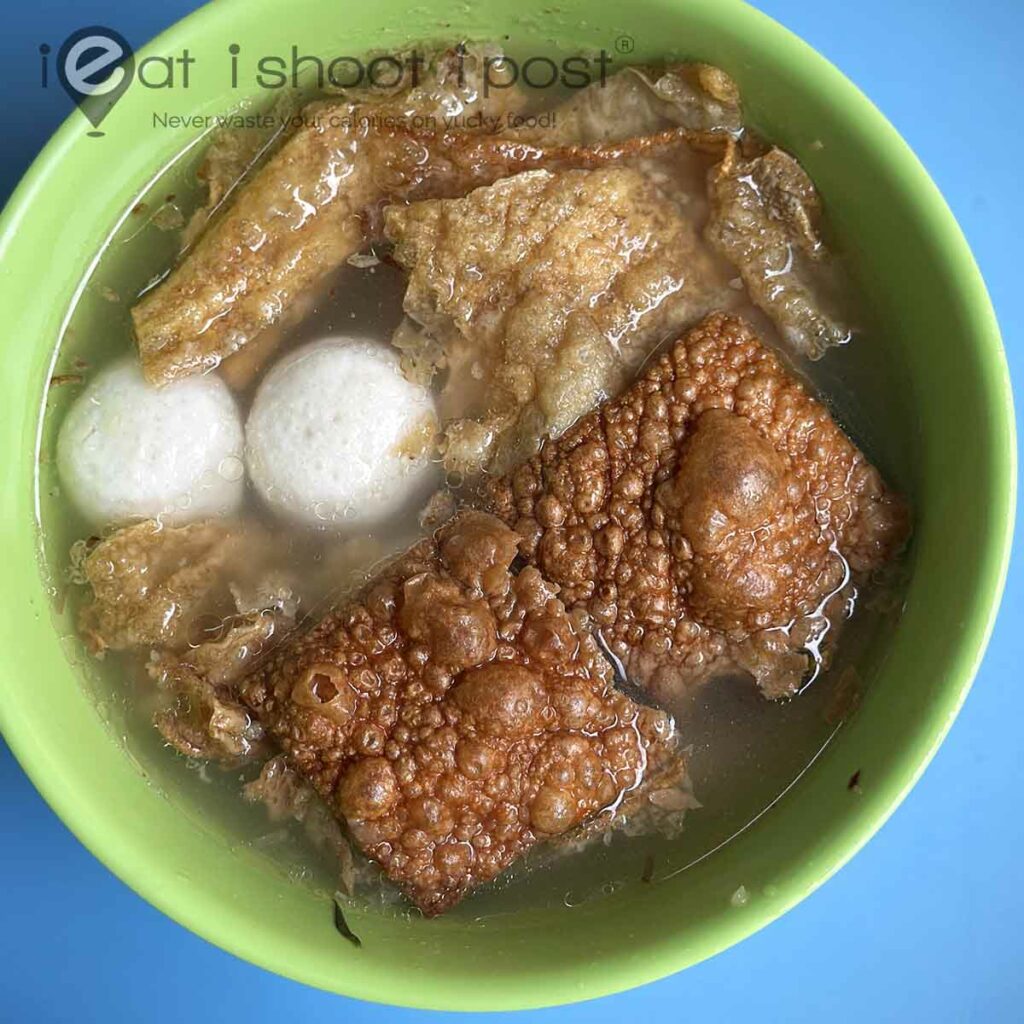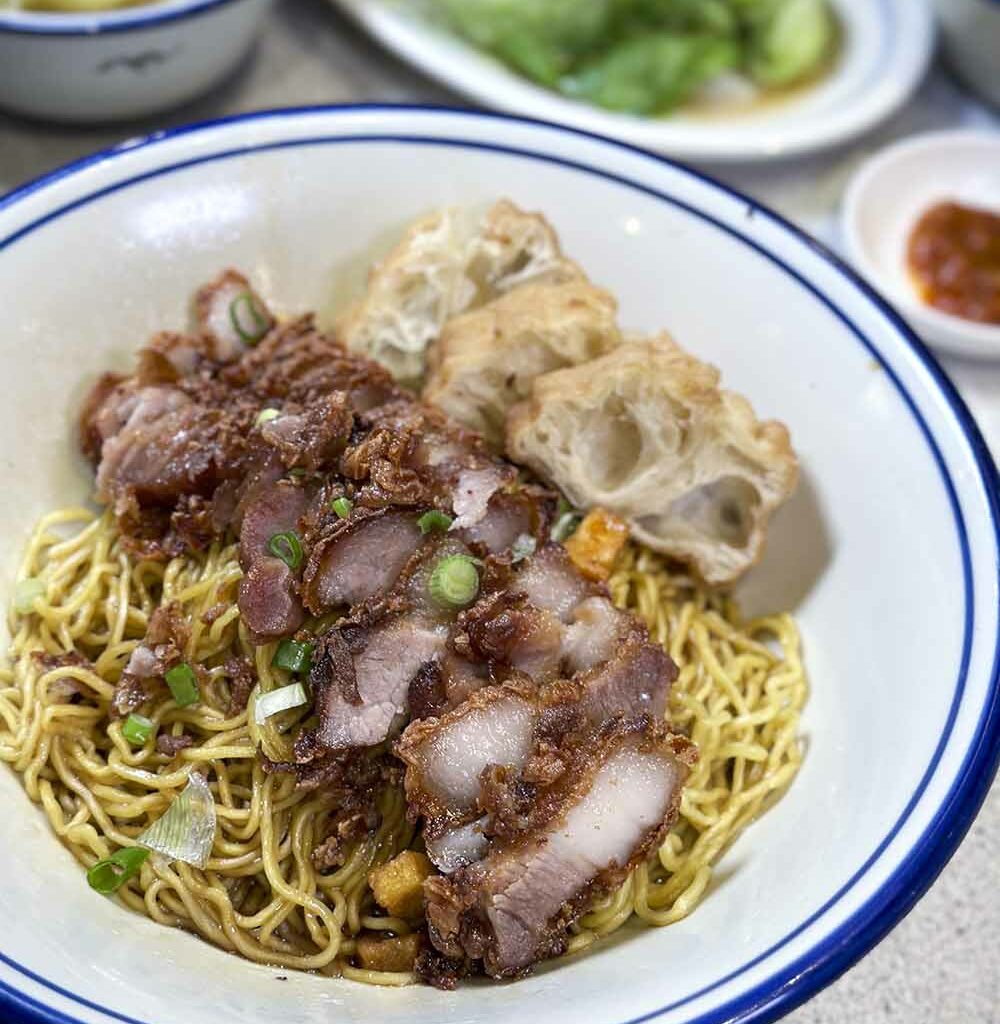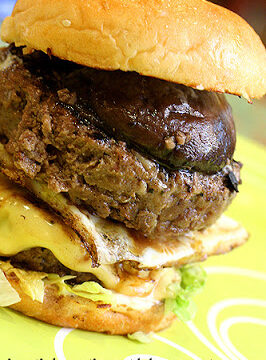Ever since I started getting serious about food, I have learnt that it pays to try anything that other people recommend even though you may not think you like it. If there are people eating it, then there must be something good about it and its a matter of learning to appreciate it. Take for instance Hakka cuisine, which I have only began to really appreciate after visiting Goldhill. In particular, I am talking about Hakka Yong Tau Foo. I can’t understand why people would make such a big fuss about eating something as simple as Bean Curd with Fish Paste, really, until I tried it the way it should be served!
And I learnt that the way to really appreciate Yong Tau Foo is to have it piping hot after blanching with just a drizzle of fragrant oil. The Bean Curd here is excellent. They use Silken Tofu rather that Tau Kwa so the texture is smooth as silk. Fresh Ikan Parang (Sai Toh/Wolf Herring) is filletted and beaten to a paste every day by hand and used as a filling for the chilli, bittergourd, tau pok and Ngor Hiang.
Those of us who like their food sweet will really appreciate the sweet sauce. This is one of the best sweet sauce I have tasted. It is really thick, sweet and substantial! Their sauce is specially tweaked not fresh out of a bottle. Secret ingredients are added and its stewed for 2 hours. 4/5
This is the first time I am eating this special dish called Yam Abacus. Before I talk about the dish, let me just say that when it comes to new foods, our brain interprets the taste based on a frame of reference. So for instance, when you eat something like crocodile meat for the first time, the taste is so foreign that you can’t really describe it. So your brain compares it with something that you are familiar with. In most cases it’s chicken. That is why every thing that is a bland tasting white meat tastes like chicken! Having the right frame of reference is so important to the enjoyment of any dish. When I first saw this dish, my immediate frame of reference was Mua Chee (Glutinous Rice with peanuts – a sweet dessert). The balls were made of Yam and rice flour and were chewy like Mua Chee, and they added some condiments on top. In the case of Mua Chee it is sweetened ground peanuts. In this case its a mixture of fried Hae Bee (dried prawns), Salted Fish and Jew Her (Dried Squid). I thought it was good and would have given it a 3.75. Then Uncle told me that the dish was the Hakka Version of Yam Cake. The Cantonese version which I am familiar with has all the dried prawns, chinese sausages mixed in the Yam Flour dough before steaming. With the Yam Abacus, the dough is rolled and dimpled (it does look like the beads on the abacus) and the ingredients are added on top instead. With this different frame of reference, my next taste of the dish was sooo different!! Suddenly I could recognize the Yam taste in the dough and how excellently the crispy toppings complemented the dough! It suddenly became a 4.25/5
The other thing I learnt to appreciate was the raw fish. Have you every wondered why they always cut it so thin? I always thought it was because it was a ploy to spread a small amount of fish meat out to cover a plate. Then I found out that it was necessary for Ikan Parang to be served this was because the fish had really tiny bones which ran longitudinally down the length of the fish and it was really difficult to remove them. So by cutting it really thin, you only get a small 0.5mm piece of bone which won’t cause you to rush to A&E! Anyway the fish here is fresh and had no fishy taste. It is served with a savoury sesame oil dressing, garlic, ginger and lots of spring onions. When you bite into the fish you will get that bit of grittiness due to the fish bones. 4/5
The last dish was the steamed La La (Clams). This is quite a simple dish, but the broth is so satisfying! Fresh clams are put into the steamer with chilli and ginger and Hua Tiao Jiu (Chinese Rice Wine is added just prior to serving. The broth is slightly bitter but complemented by the natural sweetness of the clams and the fragrance of the ginger, garlic and cut chillies! 4/5
Conclusion If you have never really appreciated Hakka cuisine, this is the place to start! The really good thing is that because less oil is used, after the meal you will feel comfortably full, but not uncomfortably bloated!
This is Mr Goldhill himself!! I’m serious. Goldhill (Jin Shan) is his Chinese name. His father who started selling Hakka food from a pushcart in the 1940’s, eventually opened a restaurant and named it after him! Acknowledgement: This was a great recommendation by one of our readers, Anthony Loke Update: 16 Dec 2006 Brought the family to eat the YTF. They were not as impressed as I was! So considering their comments and having retasted the food, I have revised the ratings a little.



